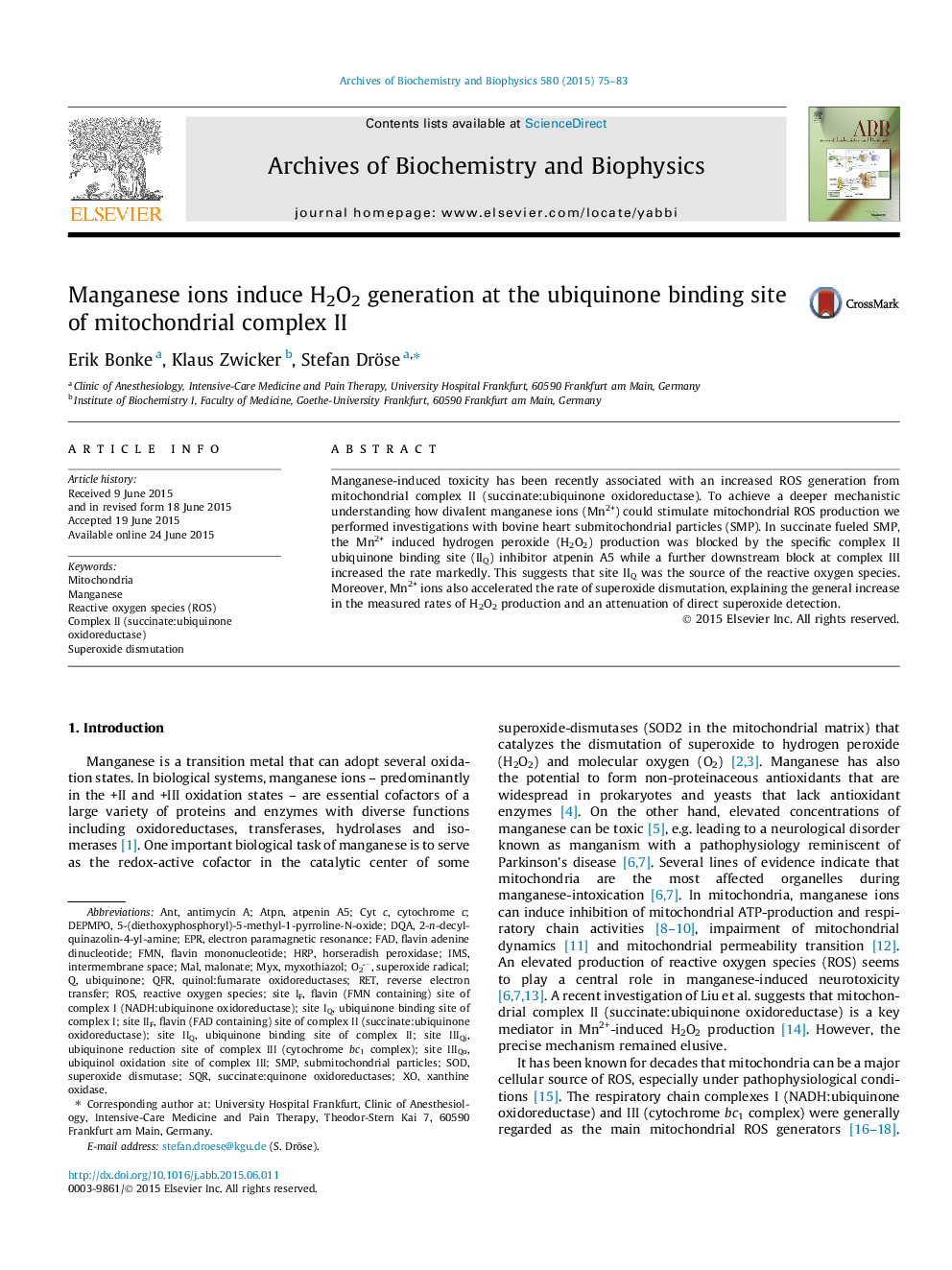| کد مقاله | کد نشریه | سال انتشار | مقاله انگلیسی | نسخه تمام متن |
|---|---|---|---|---|
| 8289636 | 1536323 | 2015 | 9 صفحه PDF | دانلود رایگان |
عنوان انگلیسی مقاله ISI
Manganese ions induce H2O2 generation at the ubiquinone binding site of mitochondrial complex II
دانلود مقاله + سفارش ترجمه
دانلود مقاله ISI انگلیسی
رایگان برای ایرانیان
کلمات کلیدی
ANTSuperoxide dismutation2-n-decyl-quinazolin-4-yl-amineMYXDQA5-(Diethoxyphosphoryl)-5-methyl-1-pyrroline-N-oxideDEPMPOQFRSQRantimycin ACyt CMALHRPFMNflavin adenine dinucleotideubiquinoneIMSXanthine oxidase - زانتین اکسیدازO2− - O2-ROS - ROSreverse electron transfer - انتقال الکترون معکوس استFAD - بدElectron paramagnetic resonance - تشدید پارامغناطیس الکترونEPR - تشدید پارامغناطیس الکترونRET - حقMalonate - خوشحالیSMP - دانشکده دبیرستانSubmitochondrial particles - ذرات ریزsuperoxide radical - رادیکال سوپراکسیدSOD - سدSuperoxide dismutase - سوکسوکس دیسموتازcytochrome c - سیتوکروم سیintermembrane space - فضای بین محوریflavin mononucleotide - فلاون مونونوکلئوتیدManganese - منگنز Mitochondria - میتوکندریاMyxothiazol - میکسوتیازولHorseradish peroxidase - پراکسیداز هوررادیشReactive oxygen species (ROS) - گونه های اکسیژن واکنشی (ROS)Reactive oxygen species - گونههای فعال اکسیژن
موضوعات مرتبط
علوم زیستی و بیوفناوری
بیوشیمی، ژنتیک و زیست شناسی مولکولی
زیست شیمی
پیش نمایش صفحه اول مقاله

چکیده انگلیسی
Manganese-induced toxicity has been recently associated with an increased ROS generation from mitochondrial complex II (succinate:ubiquinone oxidoreductase). To achieve a deeper mechanistic understanding how divalent manganese ions (Mn2+) could stimulate mitochondrial ROS production we performed investigations with bovine heart submitochondrial particles (SMP). In succinate fueled SMP, the Mn2+ induced hydrogen peroxide (H2O2) production was blocked by the specific complex II ubiquinone binding site (IIQ) inhibitor atpenin A5 while a further downstream block at complex III increased the rate markedly. This suggests that site IIQ was the source of the reactive oxygen species. Moreover, Mn2+ ions also accelerated the rate of superoxide dismutation, explaining the general increase in the measured rates of H2O2 production and an attenuation of direct superoxide detection.
ناشر
Database: Elsevier - ScienceDirect (ساینس دایرکت)
Journal: Archives of Biochemistry and Biophysics - Volume 580, 15 August 2015, Pages 75-83
Journal: Archives of Biochemistry and Biophysics - Volume 580, 15 August 2015, Pages 75-83
نویسندگان
Erik Bonke, Klaus Zwicker, Stefan Dröse,